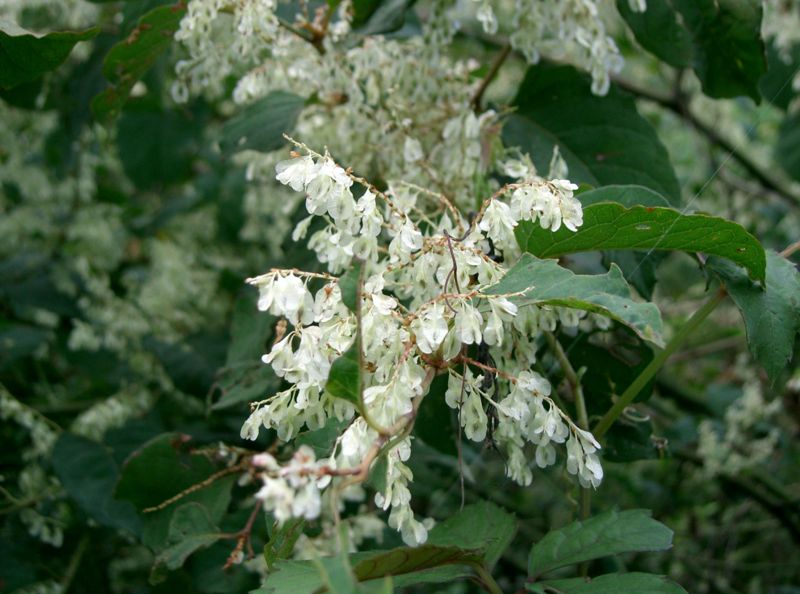Japanese Knotweed - An alien to fight an alien?
Interview with
Chris - Someone who's worked on knotweed for a very long time, that's John Bailey from the University of Leicester. Hello, John.
John - Good evening.
 Chris - Welcome to the naked Scientists. Just tell us a little bit about knotweed. What is it?
Chris - Welcome to the naked Scientists. Just tell us a little bit about knotweed. What is it?
John - Basically, it's in the polygonum family which we know mostly as dock and things like that. It's part of a giant herb community. It's herbaceous although it grows to 2 or 3 metres per year it dies down and the resources are preserved in a woody risome.
Chris - Why's it such a pest?
John - There's nothing magic about it. If you found a rosette that had just started to grow and weedkilled it, it would kill it stone dead. The problem is that in established colonies there are enormous amounts of biomass stored under the soil going down some metres.
Chris - Metres underground it's actually got rootstock from which it can regenerate a plant?
John - Technically, they're risomes - woody stems. I've got some pieces of wood from these things and you could give someone a nasty injury with them.
Chris - So they're pretty robust. What are scientists suggesting this week that we do in order to weed out the problem?
John - Basically one of the reasons it's so successful over here is it's left all its predators behind. In Japan you rarely see an undamaged plant. The idea is that by producing a slightly more level playing field you've tipped the advantage in favour of people who are actually trying to control the plant.
Chris - What pests are the scientists suggesting that we bring into the UK in order to get rid of this plant?
John - A small bug Aphalara itadori and it's a leaf-sucker. In laboratory tests it's proved very encouraging.
Chris - How do you test out whether or not something's going to have knock-on effects? It might just start attacking the knotweed but then it might develop a taste for other native species. As it's another invasive animal it might then cause more of a problem.
John - Quite right. The testing is comprehensive as possible. It's what's called the centrifugal method of testing. First of all you look at species related to the target plants: particularly crop plants such as rhubarb, buckwheat and endangered species. I think we have a species of shore dock that's endangered. Secondly you look at hosts of plant species closely related to the candidate organism then unrelated plants with morphological or biological characteristics in common with the target. Although some insects are very good taxonomists others will go for particular biochemical parts of the plants. Finally a range of crop plants: particularly those that have never been exposed to the candidate agent before.
Chris - There's not really any substitute for the real world. There's always the danger that you might have missed something, isn't there?
John - Absolutely. You can't cover absolutely every eventuality. You can only get 99% assurance.
Chris - Finally, how do you think this will actually solve the problem?
John - It won't be a magic bullet. The people promoting it don't believe that either. You've still got to carry on educating people about not spreading these plants. You've also got to carry on with the conventional control measures.
Chris - And of course not introduce them in the first place. Thank you Dr John Bailey.
- Previous Post Traumatic Stress Disorder
- Next The Physics of Fusion









Comments
Add a comment